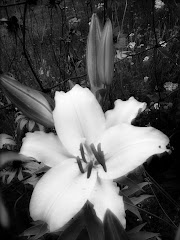 Chives (Allium schoenoprasum) are the smallest member of the onion family. An herbaceous perennial herb, chive is easy to grow. Plant in full sun in well-drained soil. From mid-May to June, chives have pretty, little cluster-like purple flowers.
Chives (Allium schoenoprasum) are the smallest member of the onion family. An herbaceous perennial herb, chive is easy to grow. Plant in full sun in well-drained soil. From mid-May to June, chives have pretty, little cluster-like purple flowers. The hollow, tubular leaves grow 30-50 cm in height. Cuttings can be made 3 times a year (cut close to the ground). My patch of chives is over 10 years old and requires minimal care. The mild, onion-flavored leaves can be used fresh or dried.
My favorite way to use chives is freshly snipped and added to scrambled eggs. I also like fresh chives on baked potatoes with sour cream and in vegetable soup.











